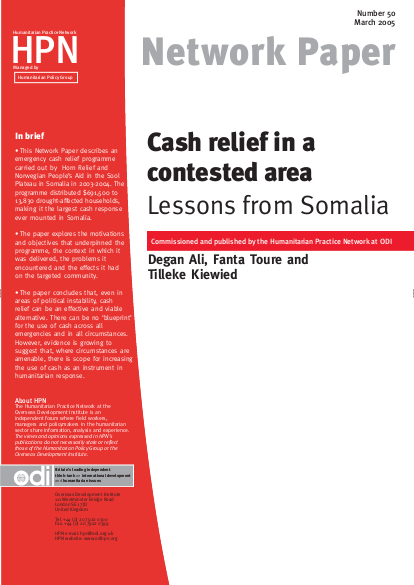
Commodities, rather than cash, remain the predominant form of emergency relief: relief agencies typically distribute food aid, seeds, tools and shelter materials; they rarely give people the cash with which to buy these things themselves. Supporters of cash responses in emergencies argue that they can be more cost-effective and timely than commodity distribution, give the recipients greater choice and dignity and benefit the economies into which they are injected. Sceptics argue that cash responses are often not practical, particularly in complex emergencies, where security risks and the risk of corruption are deemed unacceptable. Even where cash responses may be feasible, there are concerns that women may be excluded, and that the cash may be spent in unwelcome or anti-social ways. A sudden access of cash may increase inflation and depress local markets, and may encourage conflict in areas of instability.
This paper seeks to contribute to this debate by describing one example of an emergency cash response: the Emergency Cash Relief Program (ECRP) in the Sool Plateau in Somalia in 2003-2004. The programme, implemented by Horn Relief and Norwegian People’s Aid (NPA) and funded by Novib/Oxfam Netherlands, distributed a total of $691,500 to 13,830 drought-affected households, making it the largest cash response ever mounted in Somalia.
